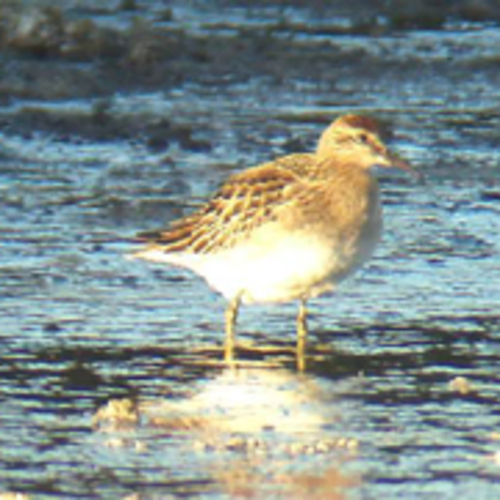General Description
Similar in size and shape to the more common Pectoral Sandpiper, the rare Sharp-tailed Sandpiper can be distinguished by its rufous cap and distinctive white eye-line. Adults in breeding plumage are heavily spotted overall. Non-breeding plumage is lighter gray and less boldly streaked. Juveniles, the form most often seen in Washington, are redder than adults, with a buff-colored, lightly streaked breast, which often serves as their most distinctive field mark.
Sharp-tailed Sandpiper's are Rare in Western Washington from September, October.Habitat
During migration, they usually stop at grassy, coastal salt marshes, although they can also be found in coastal lagoons and mudflats, especially those adjacent to salt marshes.
Behavior
In areas where they are more abundant, Sharp-tailed Sandpipers are typically seen in large flocks. In Washington, they are often seen with Pectoral Sandpipers. They feed by moving steadily along in dense grass, heads down, picking up surface prey and probing lightly. They are seen on mudflats slightly more often than are Pectorals.

No comments:
Post a Comment